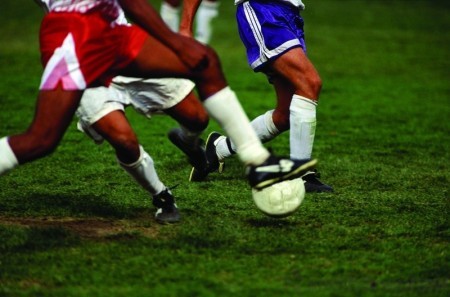Rehabilitation
Proprioception: The special function of the ACL
As well as providing a restraint to abnormal knee movement, the ACL gives important information to the muscles involved in the reflex control of knee movements. Nerve fibres give the knee a sense of position and movement and this sensory awareness is known as proprioception. It is a normal feature of all joints and helps to give us balance control and confidence in movements.
After reconstruction this key function needs to be relearnt. This involves special rehabilitation exercises for the hamstrings and quadriceps (thigh) muscles along with the core strength from the pelvis and balance control work. It is more than just strength work - it is about the fine control movements in landing and pivoting in order to prevent re-injury.
Overall Rehabilitation Plan
The overall rehabilitation plan emphasises the importance of pre-operative exercises, followed post operatively by early control of swelling and regaining full extension (straightening) and flexion (bending) of the knee.Working on strength can only start once swelling has been controlled and range of movement is nearly normal. Return to function then follows.
The outline that follows is only meant as a guide and there is considerable variation in the specific goals and exercises. It is important to follow the advice of the specific responsible surgeon and rehabilitation team.
Key to Success: Working with your physiotherapist
The key to successful rehabilitation is to regain normal, full straightening of the knee as soon as possible, as well as to control swelling in the early post-operative phase before progressing to strength activities.
For the first six weeks, until the new graft is well bedded in and healed in place, exercises are performed gently with the aim of regaining normal bending and straightening as the swelling settles.
Repetitive cycling of the knee is usually restricted during the first 6 weeks as this may overload the fixation of the ligament and lead to slippage of the graft and effective lengthening of the new ligament.
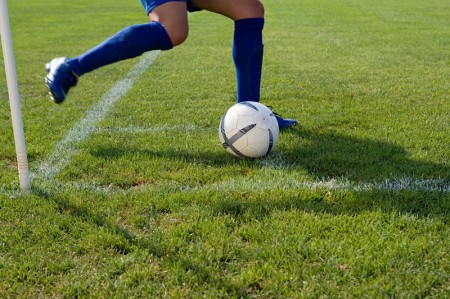
During exercises the foot is initially kept in contact with the ground or with the surface of an exercise machine these are called ‘closed’ kinetic chain exercises.
Elevation of the leg between exercises to reduce swelling is also important and helps allow the bending to improve.
‘Open’ kinetic chain exercises, where the foot is unsupported, are introduced towards the end of the first six weeks as knee control and strength improve. This allows muscle strength to improve without putting excessive stress on the graft.
Understanding the rehabilitation process
General principles for understanding the rehabilitation process
Exercises need to be done 4 - 5 times per day: little and often is better than an extensive overload period. Pain, heat and increasing swelling in the knee are potentially bad: any of these symptoms can mean that exercises are being overdone. This is unlikely to indicate a serious problem, but these symptoms should be discussed with the physiotherapist.
There is a difference between good and bad pain. After major knee surgery the knee will be sore, and it is important to understand that discomfort is normal, particularly when doing some of the stretching exercises. The knee may also ache after an exercise session. This is expected and normal so long as it is not associated with any significant increase in swelling.
‘Bad pain’ is usually sharp and severe in nature. It may be brought on by pushing too hard, and it may be accompanied by an increase in swelling. Activities causing such a problem should be stopped and advice sought from the physiotherapist.
Summary of rehabilitation phases
There are various ways to summarise the phases of rehabilitation and the following is one of the suggested approaches.
There are six main rehabilitation phases and example exercises for each phase are given in the sections that follow. Many different exercises are available to achieve the goals, and these are tailored to each individual by the physiotherapy team.
- Phase 1: Preoperative preparation/operative period
- Phase 2: Initial Post Op Phase
- Phase 3: Proprioception (sensory awareness) Phase
- Phase 4: Strength Phase
- Phase 5: Early Sport Training
- Phase 6: Return to Sport
Specific follow-up assessment: Outpatient review takes place at variable time periods depending on local facilities and surgeon preference. As an example, the following times and the goals for those stages are detailed in the guidelines:
- 2 weeks
- 6 weeks
- 3 months
- 6 months
- 1 year
Work advice and expectations
To expect to be able to return to work as follows:
- Desk work at 3 - 4 weeks
- Light manual work at 6 weeks
- Heavy manual work (ladder work etc) at 3 - 4 months.
Driving advice and expectations
- To expect to return to driving at 3 - 4 weeks depending on knee function.
All of these timescales are an approximate guide and can differ on a patient by patient basis.
Phase one to three
Phase One: Preoperative Preparation and Operative Period
Pre-Op
Rehabilitation begins before surgery in the pre-operative phase to ensure that the individual and their knee are ready for the operation.
- Ensure adequate range of movement, especially normal hyperextension, i.e. so the knee extends to the same as the other leg.
- Exercises to maintain quadriceps and hamstring muscle strength. Start balance control exercises
- Advice session in the physio department for familiarisation with post op exercises and hospital stay.
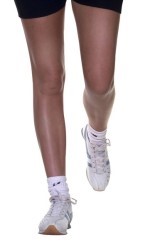
Phase Two:Initial PostOp Phase
- Range of movement: full knee extension to 110 flexion
- Wound healed
- Minimal swelling in knee and around wound
- Normal walking pattern
- Good independent single leg balance control
- Achieve full passive hyperextension
Aim The aim of this phase is to regain the range of joint movement and to allow swelling in the knee to settle. The most important aim is to regain normal and full extension (straightening) of the knee.
Review Goals:
- Range of movement: full knee extension to 110 flexion
- Wound healed
- Minimal swelling in knee and around wound
- Normal walking pattern
- Good independent single leg balance control
- Achieve full passive hyperextension
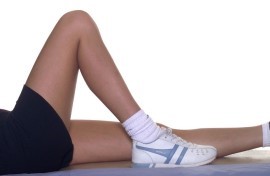
Phase Three: Proprioception Phase (Sensory Awareness)
Aim
The aim of this phase is to work on proprioceptive exercises. This stage is also important for developing core stability to help you progress to full active function. By the end of six weeks your knee should feel normal in activities of daily living.
Review Goals:
- Full range of movement including normal hyperextension
- Minimal Swelling in knee
- Full patella mobility
- Minimal discomfort
Phase four to six
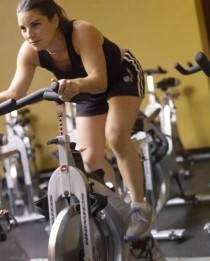
Phase Four: Strength Phase
Aim
At six weeks the graft should be solidly fixed into bone so that more vigorous strength training can start. Thigh muscle tone and definition (quadriceps / hamstrings) will hopefully have been maintained during the first post op phase and now the main strength work can begin.
Progress is monitored and controlled by the recovery of strength and muscle control. It is important to avoid too rapid progress, as there is a risk of developing overload complications.
Review Goals:
- Full range of movement
- No swelling
- Confident feeling of stability
Phase Five: Early Sport Training Phase
Aim
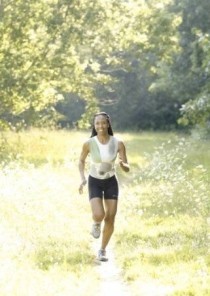
Pivoting and cutting movements are introduced at this stage, building up to light sport training. This involves a progressive programme of slow and moderate speed strength training and agility drills. Manual work should be possible within the restraints of the occupation. Exercises for power and agility training are introduced.
Many sport specific skill training exercises can be introduced at this stage and detail for particular sports is given in the next section as there is some overlap during these phases. The new ligament is still at significant risk of re-injury or of stretching out if progress back to full levels of sport is too fast.
There is no one solution that fits all individuals and great emphasis is given on the care in progressing through this phase back to sport. Supervision by a Physio, sports coach or trainer is key, as drill and skill acquisition is dependent on individual muscular control patterning in addition to individual relative strength deficits around the hip, knee and ankle.
Review Goals:
- Full Range of movement
- Functional and Strength tests: 85% of normal side
- Return to non-contact sports training
Phase Six: Return to Sport Phase
Aim
The aim of this phase is to progress sport training and to develop strength and endurance levels to allow return to full sporting activity. This takes time, especially in building up confidence to progress to full contact activities.
Return to contact sport is not recommended until strength and functional outcomes are measured at greater than 85% of the normal knee. It should be remembered that the time to regain pre-injury level of skill and performance is very variable but can take 3 - 4 months of training and playing. This confidence can be helped by introducing modified training and specific drills early, often in conjunction with club or team activities.
Progress is best achieved in conjunction with a general fitness programme, as this will have reduced over time since the injury and surgery. Full contact sport is, in general, best avoided until able to tolerate a full training session with confidence in full fitness and endurance.
Full details of return to sport rehabilitation should be obtained from the surgical and rehabilitation team.
